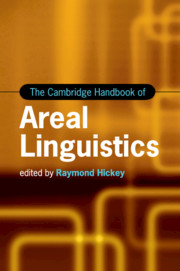Book contents
- The Cambridge Handbook of Areal Linguistics
- Cambridge Handbooks in Language and Linguistics
- The Cambridge Handbook of Areal Linguistics
- Copyright page
- Contents
- Figures
- Maps
- Tables
- Contributors
- Preface
- 1 Areas, Areal Features and Areality
- Part I Issues in Areal Linguistics
- Part II Case Studies for Areal Linguistics
- Index
- References
Part II - Case Studies for Areal Linguistics
Published online by Cambridge University Press: 11 May 2017
- The Cambridge Handbook of Areal Linguistics
- Cambridge Handbooks in Language and Linguistics
- The Cambridge Handbook of Areal Linguistics
- Copyright page
- Contents
- Figures
- Maps
- Tables
- Contributors
- Preface
- 1 Areas, Areal Features and Areality
- Part I Issues in Areal Linguistics
- Part II Case Studies for Areal Linguistics
- Index
- References
- Type
- Chapter
- Information
- The Cambridge Handbook of Areal Linguistics , pp. 237 - 996Publisher: Cambridge University PressPrint publication year: 2017

